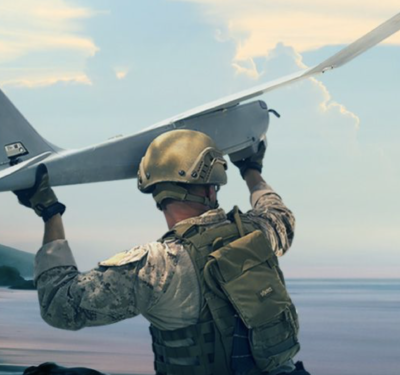Using drone technology and artificial intelligence (AI), Intel recently completed to successful wildlife expeditions, one focusing on polar bears and the other on whales.
Intel worked with wildlife photographer and conservationist Ole Jørgen Liodden as well as nonprofit organizations Parley for the Oceans and Ocean Alliance for the studies, according to a news release.
“Artificial intelligence is poised to help us solve some of our most daunting challenges by accelerating large-scale problem-solving, including unleashing new scientific discovery,” said Naveen Rao, vice president and general manager of the Artificial Intelligence Products Group at Intel Corporation, according to the release. “Intel is proud to bring our expertise and technology to these research efforts and aid in the mission to better understand the health of our planet and, ultimately, humanity.”
During the polar bear exploration, Intel’s Falcon 8+ system helped track polar bears and communities in the Arctic, according to the release. The unmanned aircraft system (UAS) captured information on the animal’s behavior patterns, in a safer, more efficient way than traditional methods, which involve helicopters. The researchers also were able to obtain more reliable data that they can use to track the polar bears’ behavior, breeding, feeding and migration habits. This will in turn help scientists understand the effects of climate change on the Arctic, as well as the health of the entire planet.
The UAS was flown about 50-100 meters from the animals, according to the release, who didn’t show any signs of distress or changes in behavior when the drone was nearby. The white bears can be difficult to spot because they blend into the Arctic’s harsh environment, a challenge the drone’s thermal camera payload helped overcome.
“Polar bears are a symbol of the Arctic,” Liodden said, according to the release. “They are strong, intelligent animals. If they become extinct, there will be challenges with our entire ecosystem. Drone technology can hopefully help us get ahead of these challenges to better understand our world and preserve the earth’s environment.”
Intel worked with Parley for the Oceans and Oceans Alliance for the whale exploration, according to the release. Their goal was to analyze the condition of the whales and their environment. Through Project SnotBot, Intel machine learning technology ran algorithms to identify a particular whale and assess its health in real time, regardless of confounding factors such as the whale’s unpredictable movements and limited ocean visibility. This helped improve data analysis.
With this technology, researchers can make more timely decisions in the field and better understand the biological data that whale snot holds, including DNA, stress and pregnancy hormones, viruses, bacteria and toxins. The SnotBot has been used to collect spout water from blue whales, right whales, gray whales, humpbacks and orcas in oceans around the world.
“Parley SnotBot, a collaboration with Ocean Alliance and Intel, is a new and non-invasive research technology which allows us to explore our oceans in real time and open source data and knowledge, said Cyrill Gutsch, Parley for the Oceans Founder, according to the release. “Our vision is to create a global network of digital exploration tools which generate the big data we need to identify threats with new speed and precision, so we can act on them instantly.”






